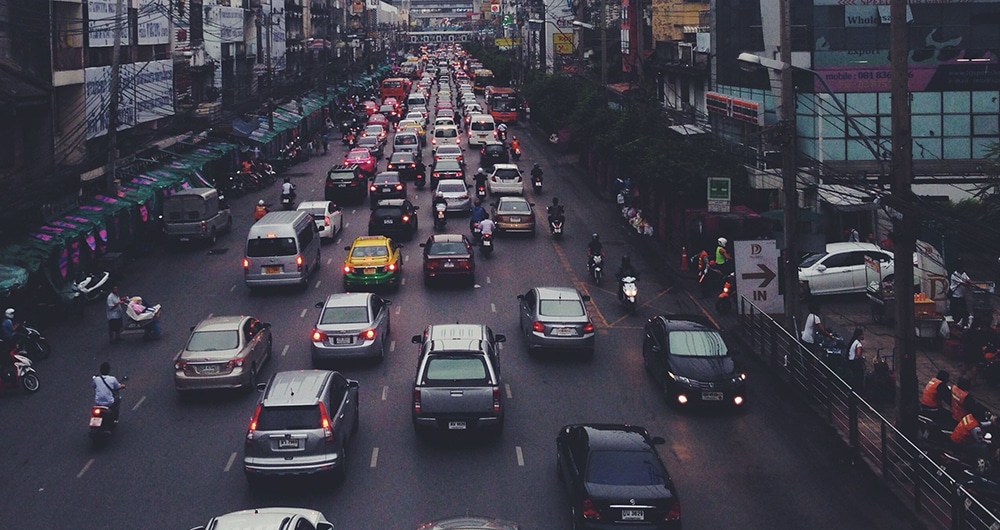
As the all-new INRIX Global Traffic Scorecard demonstrates, congestion is a truly global phenomenon. No country is immune and all of the world’s major cities have a significant and growing congestion problem. Worldwide, drivers spent 9% of their driving time in 2016 stuck in congestion, and car commuters wasted days in gridlock last year. For example, drivers in Russia spent an average of 42 hours in peak hour congestion, and drivers in Turkey, the UK, Germany, Slovakia, Luxembourg, Norway, Poland, Switzerland, Austria and Sweden all spent more than a day stuck in peak hours congestion on average. Even non-drivers suffer as businesses pass on the costs of congestion through higher prices for goods and services. And everybody suffers air pollution and climate change when additional fuel is needlessly burnt.
Congestion is bad for our wallets and our health, but in one sense it is a good problem to have. Roads are the arteries of the economy pumping people and goods around the country. Congestion is the symptom of a rich and prosperous economy.
Yet whether I’m presenting our research to industry leaders, sharing insights with transportation professionals, or briefing journalists I get the same question every time: how do we tackle congestion?
The start is diagnostics: we need good data and insight. Policymakers and transportation professionals need to know when and where congestion is worst, and exactly how bad it is in order to prioritize investments and to maximize limited budgets. INRIX provides world-leading transport data and analytics. From the annual INRIX Traffic Scorecard that measures the health of our cities’ road networks to our cloud-based performance analytics platform, INRIX Roadway Analytics provides on-demand tools for monitoring and evaluating roads in near real-time, INRIX is part of the solution.
Drivers need insight too. Understanding when congestion is most likely to occur and on what routes can help drivers plan accordingly, whether that means setting off early or taking an alternative route. Real-time traffic services provided by INRIX allow drivers to adapt to congestion optimizing their route to get them to their destination as quickly as possible.
There is no silver bullet, no magic pill that will erase congestion. The causes of congestion are specific to the city and often the actual road. But the fundamental cause is an imbalance between the demand for roads and the supply of road space. Managing demand for road space is critical. That includes smoothing demand through flexible working, avoiding peak hour trips through remote working, and encouraging the efficient use of our roads through wider adoption of road user pricing. At the same time, cities and highways agencies must optimize the road network. That includes embracing Intelligent Transport Solutions such as dynamic traffic lights, the wider use of all lanes running on motorways, and the efficient planning of road works.
There are plenty of examples where this has worked effectively. For instance, Transport for London have rolled out sensors buried in carriageways across London to detect real-time traffic conditions at junctions and optimize traffic light timings to reduce delays. This ‘SCOOT’ technology has been rolled out at 80% of London’s 6,000 traffic lights and is proven to reduce delays at junctions by 13% on average, generating over £100,000 in user benefits at every junction every year. INRIX is involved in the next generation of this technology that uses our real-time traffic light data to optimize traffic lights.
Once, each initiative or policy has been implemented we need to close the feedback loop and evaluate. Tools available in Europe such as INRIX Roadway Analytics allow users to monitor and evaluate programs on-demand thanks to our cloud-based technology. Instead of commissioning expensive and lengthy studies, users can take control of their own performance monitoring at a click of a button.




